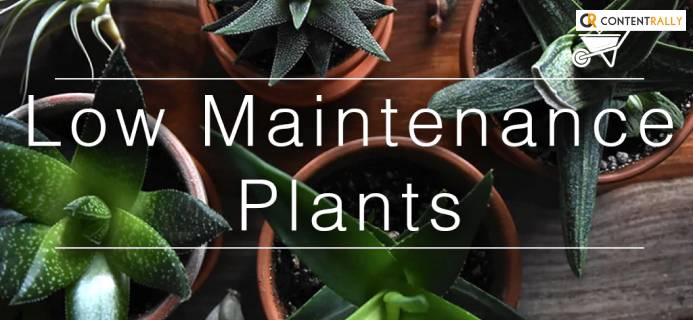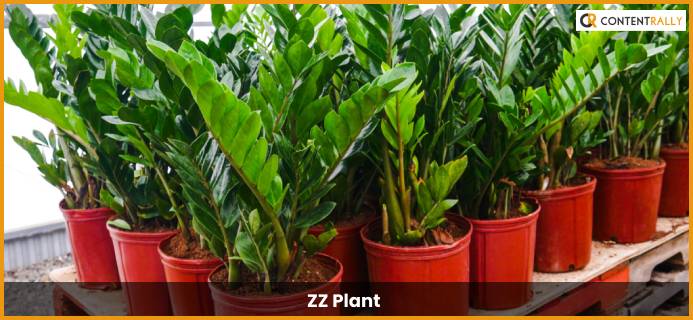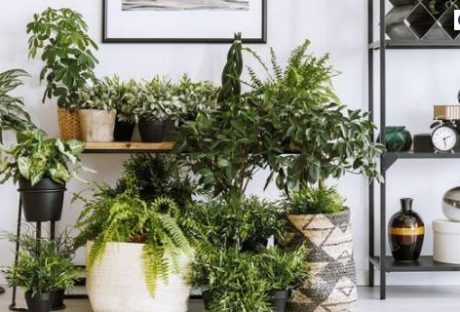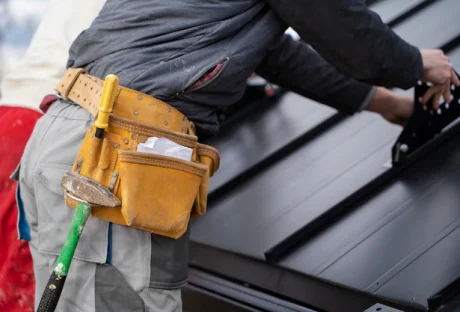I have always enjoyed gardening, spending time in nature, and a general affliction towards plants. However, once professional commitments started taking up too much time, I was left with ‘no time to stand and stare’. Whatever time I had left, most of it went behind work, and my plants started shriveling up. Do you relate?
If this sounds relatable, then keep reading to find out what I did to change things and give my plants the time they need. Well, for starters, I started investing more in low-maintenance plants. These plants can easily thrive well under low lights and can quickly bounce back in case of one or more missed watering. So soon, I was able to spot the change!
10 Best Low Maintenance Plants To Buy In 2024:
It was a discovery that I thankfully stumbled upon. It made things so much easier for the anthophilous inside me that I was motivated to write about it. If you are also planning to purchase a few low-maintenance plants, then scroll down to find out more on the same!
1. Cacti
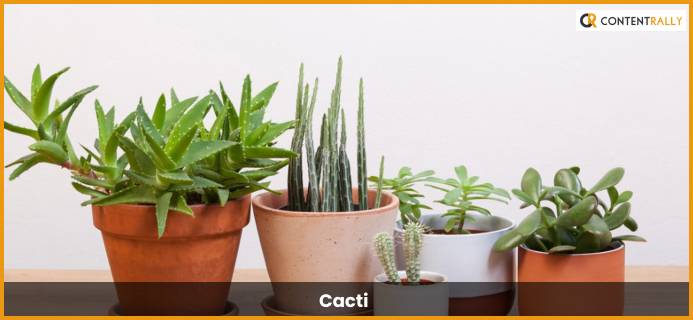
If you have long and irregular work schedules, then Cacti is probably the best low-maintenance indoor plant. Cacti plants can thrive well in light that’s natural and requires water only once every week during summer and spring. During winter and fall, you just need to water your cacti once in three weeks.
Price: 18 dollars (for four)
Why Do We Love It?
- Can be grown easily
- Can be cared for easily
- Great option as a gift
2. Air Plants
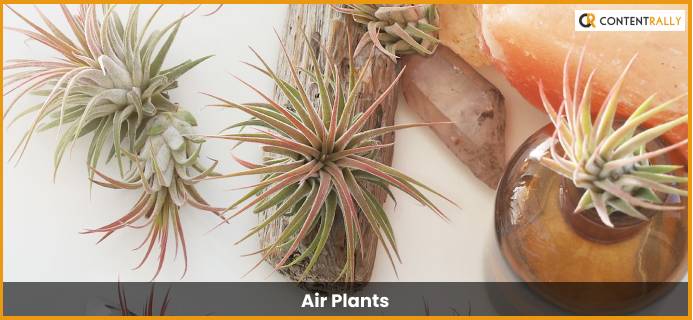
Air plants are great alternatives for low maintenance plants – they do not even need soil for survival. All that you have to do in this case is dunk these plants in the water for 2 to 3 hours, once every ten days. Now is that not perfect? This is entirely doable every 10 days while you spend your afternoon sunk knee-deep in work.
Price: 14 dollars (for five)
Why Do We Love It?
- Easy to maintain
- Very affordable
- Saves time
3. Pothos
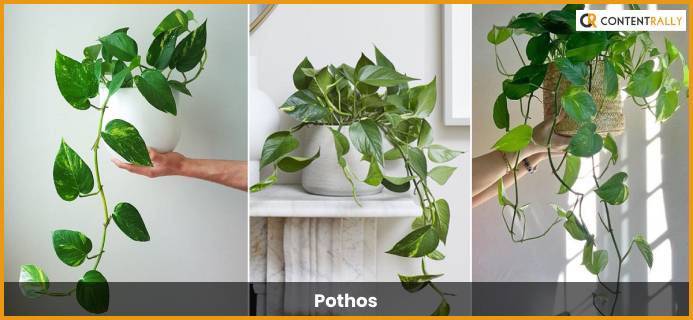
Pothos is also referred to as Devil’s Ivy and is one of the best types of low-maintenance house plants. The best part? These plants can thrive well in both light and darkness. So if you keep it in your low-light cubicle, the plant will survive, and the same goes for brightly lit areas. Also, it can survive when you forget to water the plant.
Price: 18 dollars (for five)
Why Do We Love It?
- Air-purifying properties
- Value for money
- It comes in a grower’s pot
4. ZZ Plant
The ZZ Plants thrive the best in brightly lit rooms, but that does not mean they cannot survive in moderate or low lights. Just like cacti, you don’t need to water them every day. Moreover, it’s a pretty sturdy plant. When you notice that the leaves are falling off, simply water it properly, and you will soon notice the plant from bouncing right back.
Price: 26 dollars
Why Do We Love It?
- Can thrive in both natural and artificial light
- Sturdy and durable
- Great option as a gift
5. Spider Plants

Spider plants are pretty great options if you are looking for low-maintenance plants. These spidery plants tend to dry out in between two watering sessions. In addition, spider plants thrive pretty well under indirect light, and as a result, these plants can flourish well even inside windowless, dark offices.
Price: 12 dollars
Why Do We Love It?
- Can thrive well in both natural and artificial light.
- Air-purifying properties.
- Great option as a gift for apartments, office cubicles, dorm rooms, and the like.
6. Snake Plants
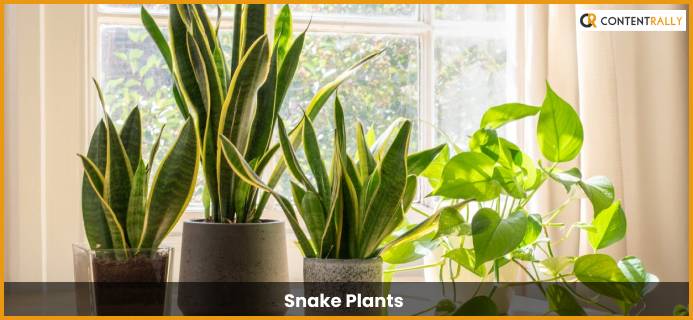
There are low-maintenance plants, and then there are Snake plants. These are not just great as low-maintenance outdoor potted plants but also as plants for low-lit indoor cubicles. Simply put, snake plants are great alternatives for those offices where you get just thirty minutes for grabbing your lunch – let alone watering your plants.
Price: 38 dollars
Why Do We Love It?
- Has higher carbon dioxide absorbing efficiency and releases oxygen at night.
- Has premium air-purifying properties.
- Versatile – can be planted in a pot or directly into the ground.
7. Succulents
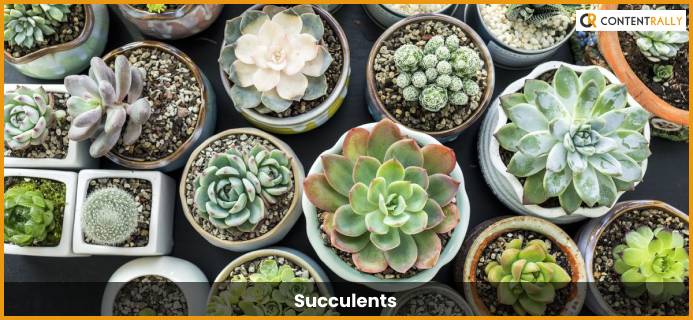
Succulents are amazing not because they can be easily maintained but mostly because it has thick leaves that store water. As a result, these plants needed to be watered once a week. Also, these thrive well in dry air and sunlight. No wonder succulents are the best low-maintenance outdoor potted plants.
Price: 19 dollars (for five)
Why Do We Love It?
- Easy to grow and maintain
- Very affordable
- Perfect for DIY or doing your home decor
8. Bamboo
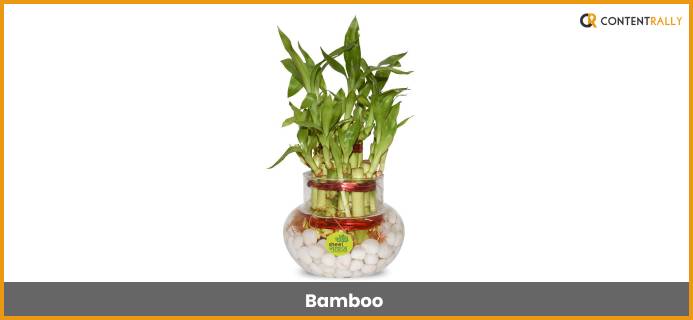
Considered to be a lucky plant, Bamboo needs some light for thriving. This technically means Bamboo plants are great for those cube desks at work. If anyone is starting a new job, it’s best to gift them a bamboo plant wishing them good luck. Also, these plants give any workspace a Feng Shui boost.
Price: 28 dollars
Why Do We Love It?
- Easy to grow and maintain
- Value for money
- Ideal gift for everyone
You May Also Like This:
9. Peace Lily
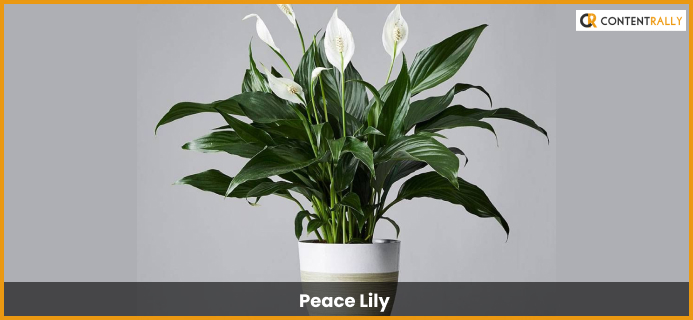
Peace lilies look beautiful, and they also happen to be very easy to grow and maintain. All you need to do is keep misting the leaves and moisturize the soil regularly. However, make sure you are not overwatering the plant, and you should keep the plant away from direct sunlight.
Price: 24 dollars
Why Do We Love It?
- Thrives in indoor light
- Has health benefits
- Easy to maintain and care for
10. Red Aglaonema

Did you know that the Red Aglaonema is new and happening presently? The leaves are all reddish-pink, while the stems are pink. This low-maintenance plant simply amps your cubicle’s personality a few notches higher. Naturally, these will appear brighter in well-lit rooms, buts they can also thrive well under low light.
Price: 21 dollars
Why Do We Love It?
- Sturdy and durable
- Adds texture and color to different spaces
- Ideal for dorm or room decor
11. Dusty Miller
Often called silver ragwort, this icy-looking plant can withstand shade but prefers bright light. The distinctive, silvery leaves become more green-gray in shaded areas, which is also a visually pleasing effect. Its foliage is the main attraction, though it produces small, bright yellow blooms in midsummer.
12. Ribbon Grass
Because they spread easily, these variegated blades make an excellent ground cover option. They do not mind shade or sun, but they do love moisture. When planted as a border in your garden, they create a charming link between the grass and the garden. Just make sure to use your shovel to create a sharp trench to keep it from getting into your flowers.
13. Cosmos
The name “cosmos” comes from the Greek word for “harmony” or “ordered universe,” and Mexican priests gave these happy little flowers this name due to their perfectly arranged, uniform petals. You’ll have blooms from spring into autumn because these annual flowers reseed and grow well in full sun.
14. Butterfly Bush
Some of the longest-blooming shrubs are these sun-loving plants. They are drought- and insect-resistant and have a vibrant range of colors that are perfect for summer. The plants will naturally draw a large number of hummingbirds and butterflies throughout the fall season.
Frequently Asked Questions (FAQs):–
Ans: The most low maintenance plants are,
⦿ Aloe vera
⦿ ZZ plant
⦿ Snake plant
⦿ Spider plant, and
⦿ Cast-iron plant
Ans: The easiest plants to take care of are,
⦿ Cast-iron plant
⦿ Snake plant
⦿ ZZ plant
⦿ Spider plant
⦿ Aloe Vera.
Ans: The most durable house plants are,
⦿ ZZ plant
⦿ Snake plant
⦿ Chinese money plant
⦿ Bromeliads
⦿ Chinese Evergreen Plant.
Wrapping Up:
Remember that it is always a good idea to check the resources available through your local extension service, even if the plants you choose are designated for your USDA Plant Hardiness Zone and the light and soil conditions of your site. By taking into account factors like wind, humidity, rainfall, and more, you can determine what grows best in your area. It’s worth noting that not all plants labeled as “deer-resistant” will withstand deer damage.
Are you looking for additional strategies to work in the garden more efficiently rather than more laboriously? Invest in a base of well-established evergreen shrubs; you’ll be grateful for it come winter. Fast-growing vines can make a big difference for an ugly fence or garden wall without requiring a lot of work.
Additionally, check out container plants and outdoor hanging plants if your garden is limited to a patio or balcony
Low-maintenance plants are pretty popular presently. Mostly because they are easy to grow and maintain. So what are you waiting for? Invest in some low-maintenance plants today, and let us know which one are you buying first.
Read Also:













